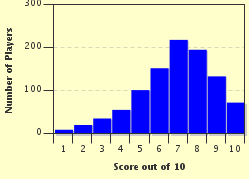Quiz Answer Key and Fun Facts
1. What is the more common name of acetylsalicylic acid, an analgesic (pain reliever), which is also an antipyretic (fever reducer) and an anti platelet (blood thinning) drug?
2. Which of the following is true concerning Tylenol (acetaminophen)?
3. Which of the following is true concerning Ultram (tramadol)?
4. Which of these analgesics is NOT a controlled substance in the U.S.?
5. Which of the following is NOT true concerning the analgesic butalbital?
6. Which of the following is true concerning Vicodin (hydrocodone/acetaminophen)?
7. Which of the following is true concerning Oxycontin (oxycodone timed-release)?
8. Although morphine was discovered in 1804, it was not until the development of which of the following that its use became widespread?
9. Which of the following is NOT true concerning Fentanyl?
10. Which of the following caution labels would NOT be affixed to the bottle of hydrocodone/apap you just had filled at the pharmacy?
Source: Author
bethsch
This quiz was reviewed by FunTrivia editor
crisw before going online.
Any errors found in FunTrivia content are routinely corrected through our feedback system.


